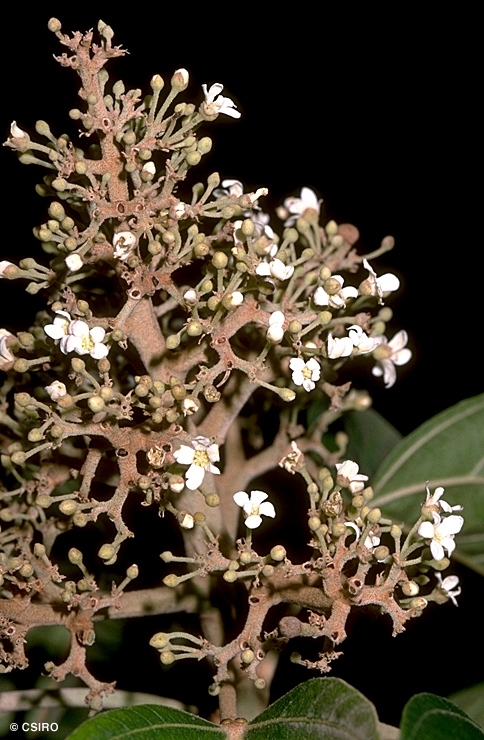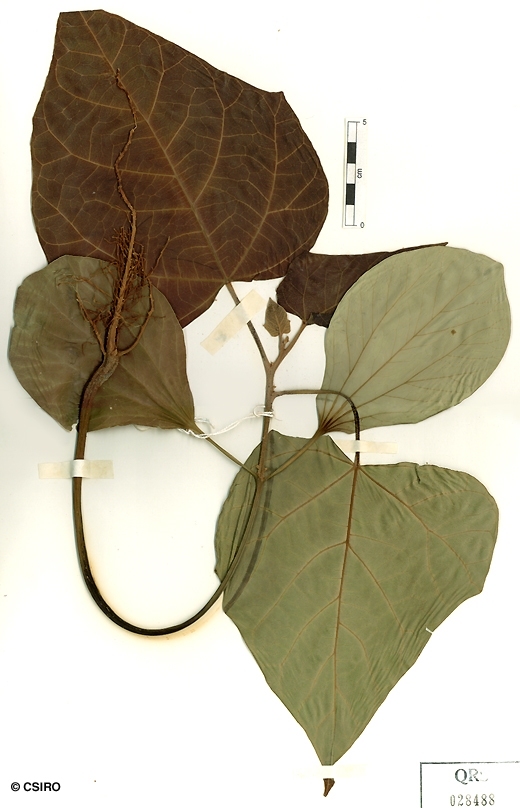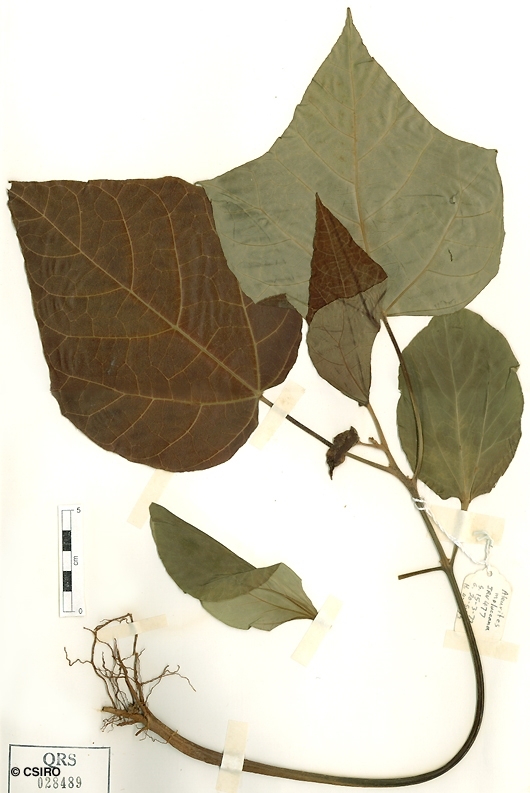Australian Tropical Rainforest Plants - Online edition
Aleurites rockinghamensis (Baill.) P.I.Forst.






Forster, P.I. (1996) Muelleria 9: 8.
Candlenut Siris; Siris, Candlenut; Candlenut
Exudate, if present, watery red. Blaze often layered and the layers differing in colour, often being pink or orange. Lenticels usually arranged in longitudinal lines. Blaze usually marked with cream or darker speckles and cream granular stripes beneath the lines of lenticels.
Two conspicuously raised green or almost black glands on the upper surface of the petiole near its junction with the leaf blade. Leaf blades about 11-40 x 7-30 cm. Midrib and about four lateral veins radiate from the point of attachment of the petiole. Small oil dots just visible with a lens. Young shoots and terminal buds densely clothed in cream or brown hairs, many of which are stellate.
Fruits about 7-8 cm diam., usually 3-lobed, sometimes 4-lobed, or reduced to one or two. The rat-eaten remains of the hard, spherical seed coats (about 2 cm diam.) normally present under large trees.
Cotyledons oblong to obovoid, about 9-12 x 6-8 cm. First pair of leaves +/- cordate, sometimes lobed, base cordate or truncate. At the tenth leaf stage: leaf blade palmatifid, apex acute or acuminate, base hastate, both the upper and lower surfaces of young leaves with pale brown stellate hairs near the base along the midrib and main lateral veins; oil dots visible with a lens; two glands occur on the upper surface of the petiole near its junction with the leaf blade. Petiole, stem and terminal bud clothed in numerous brown stellate hairs. Seed germination time 66 days.
Occurs in NEQ. Altitudinal range from near sea level to 1000 m. A fast growing tree which often grows in disturbed rain forest but also found in well developed rain forest. May also occur in New Guinea.
Logs of this species are usually used in competition wood chop events at shows in North Queensland.
The seeds of this species are sometimes eaten and they can taste quite pleasant, however, they can produce severe vomiting and diarrhea. Everist (1974).





